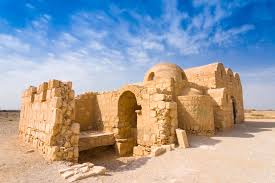Al SALT
The most historic town in Jordan and a town of picturesque streets and dazzling houses from the late Ottoman period with their characteristic long-arched windows, located 32 km (21 miles) northwest of Amman.
This ancient town was once the capital of Jordan or Balqa region. A 30-minutes drive (approx. 33 km – 21 miles) northwest from Amman transports you back in time to a town of picturesque streets and dazzling houses from the late Ottoman period, with their characteristic long-arched windows.
It’s the ideal place for admiring the architecture, stopping off at the small archaeological museum, and finishing up at As-Salt Zaman, a lovely restored old building in the heart of the town, charmingly furnished with antiques and handicrafts. As-Salt also houses a Handicrafts School where you can admire traditional skills of ceramics, weaving, silk screen printing, and dyeing.
RELIGION
As-Salt has attracted settlers since the Iron Age at least. The area enjoys a moderate climate, a plentiful supply of water and fertile soil. It was also well placed on the north to south trade routes and those running from east to west, linking the interior with Jerusalem, Nablus, Nazareth, and the Mediterranean coast. Its mixed Muslim-Christian population and its trading tradition helped create an atmosphere of tolerance and coexistence.
There are Roman tombs on the outskirts of the town, and during the Byzantine period it was known as Saltos Hieraticon. In the 13th century a fortress was built on the site of the citadel by the Mamluk Sultan Al-Malek Al-Mu’azham, who was based in Cairo. Destroyed by the Mongols in 1260, the fortress was rebuilt a year later by a second Mamluk ruler from Egypt. Six centuries later, in 1840, the forces of yet another Egyptian potentate, Ibrahim Pasha, demolished it again. The Citadel is now the site of a large mosque, which towers over the modern town.
By the early 19th century, As-Salt was a well-off frontier town on the edge of Ottoman Empire and the desert. Useful to all, it was ruled by none. The town was also the center of lucrative trading between the region and urban industries in Palestine.




Facebook Comments